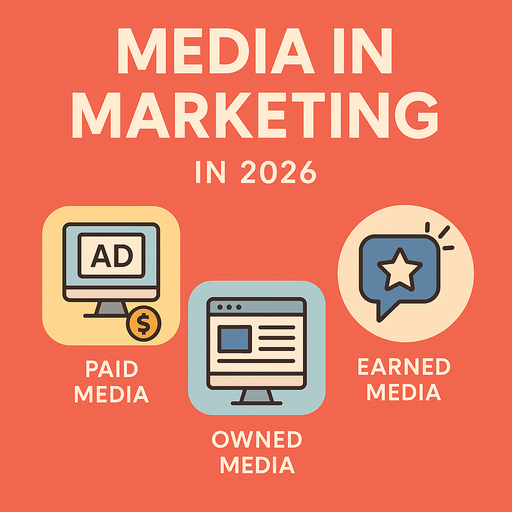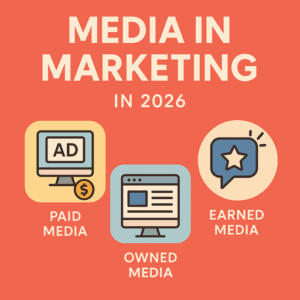LinkedIn has long been a goldmine for professionals looking to network, establish partnerships, and grow their businesses. In recent years, however, the platform has evolved into one of the most effective tools for lead generation. As businesses continue to navigate the digital landscape, LinkedIn’s ability to connect companies with potential clients, prospects, and collaborators has never been more crucial. And now, with the rise of advanced tools designed to streamline the process, LinkedIn lead generation has entered a new era. But how exactly are these tools reshaping sales strategies? In this post, we’ll explore how LinkedIn lead generation is evolving and how tools like LinkedIn prospecting tools are making it easier than ever to find and nurture high-quality leads.
The Shift in Sales Strategies
Sales has always been about relationships. However, traditional methods of lead generation, like cold calling and emailing, are becoming less effective in today’s fast-paced, digital-first world. Consumers are more selective about who they engage with, and with so many messages flooding their inboxes and social feeds, standing out has become a huge challenge for sales teams.
This is where LinkedIn has gained prominence. With over 700 million members worldwide, LinkedIn offers an incredibly targeted way to reach prospects. It’s a platform that allows sales professionals to build relationships over time rather than pushing a hard sell right from the start. However, as valuable as LinkedIn can be, manually sifting through profiles and sending outreach messages can be time-consuming and inefficient, especially when the scale of outreach grows.
In response to these challenges, Linkedin Prospecting tool have emerged as a way to automate and optimize the process without losing the personal touch that makes LinkedIn so effective. These tools are transforming the way sales professionals approach lead generation, allowing for more streamlined, intelligent outreach.
How LinkedIn Prospecting Tools Are Changing Lead Generation
LinkedIn prospecting tools are software solutions that help users identify, engage, and convert leads more efficiently. These tools take advantage of LinkedIn’s vast network and data, allowing sales professionals to target specific groups of individuals based on a variety of criteria such as job title, industry, company size, location, and more.
The key to their effectiveness is automation combined with personalization. Sales teams can leverage LinkedIn prospecting tools to automatically gather data on potential leads, send connection requests, and even follow up with prospects—all while tailoring messages to each individual. Here’s how these tools are changing sales:
1. Time Efficiency Through Automation
One of the biggest advantages of LinkedIn prospecting tools is the ability to automate repetitive tasks. Manually searching for leads, visiting profiles, sending connection requests, and following up on previous conversations can take hours each week. By automating these tasks, sales teams can focus on the more strategic aspects of lead generation, such as crafting personalized outreach messages and nurturing relationships.
Many LinkedIn prospecting tools come with built-in features that allow users to automate connection requests, messages, and even follow-up sequences. For example, tools like these can automatically send personalized messages to prospects after they accept a connection request, eliminating the need to craft each message from scratch. The result is a more efficient process, allowing sales professionals to reach out to more leads without sacrificing quality.
2. Targeted Lead Generation
A significant challenge in lead generation is finding the right prospects. While LinkedIn provides powerful search filters, manually sifting through profiles can be overwhelming, especially when you’re trying to find individuals who fit specific criteria. LinkedIn prospecting tools make this process much more precise.
With these tools, users can filter profiles based on a range of attributes, such as industry, location, company size, and job title. This level of granularity allows sales teams to zero in on the most relevant prospects, rather than wasting time reaching out to people who may not fit their target audience. As a result, the quality of leads generated is higher, which increases the likelihood of conversion.
3. Enhanced Personalization at Scale
One of the biggest misconceptions about automation is that it makes outreach impersonal. While it’s true that mass emails and generic LinkedIn messages can feel robotic, LinkedIn prospecting tools are designed to keep the personal touch intact. These tools can help users send personalized messages at scale by incorporating dynamic fields such as the recipient’s name, company, and job title into each outreach.
For instance, a LinkedIn prospecting tool can generate a custom message that acknowledges something specific about the prospect, such as a recent post they shared or a mutual connection. By using these tools strategically, sales teams can craft messages that feel personal and relevant, even when sending out hundreds of connection requests. This ability to scale personalized outreach is a game-changer, as it allows sales teams to engage with a larger pool of prospects while still maintaining a human connection.
4. Streamlined Follow-Ups
Following up with prospects is a critical part of the lead generation process. However, manually tracking each lead and remembering when to follow up can be overwhelming. LinkedIn prospecting tools help solve this problem by automating follow-up sequences.
Many tools offer the ability to schedule automated follow-up messages that can be sent after a set period of time, such as a few days or a week. These messages can be personalized and tailored to the individual prospect’s profile, allowing sales teams to stay on top of their outreach efforts without having to keep track of each lead manually. This ensures that no lead falls through the cracks and that follow-ups are timely and consistent, which can significantly increase the chances of converting a connection into a client.
5. Real-Time Analytics and Insights
LinkedIn prospecting tools don’t just automate outreach—they also provide valuable insights into how well your efforts are performing. By tracking metrics such as message open rates, connection acceptance rates, and response rates, these tools offer real-time feedback on your lead generation efforts. This allows sales professionals to assess what’s working and what’s not, so they can tweak their strategies accordingly.
For example, if you notice that certain messaging approaches are resulting in higher response rates, you can double down on that approach. Conversely, if a particular outreach strategy isn’t yielding results, you can adjust your messaging or target audience to improve performance. These insights make LinkedIn prospecting tools not just a means of automating tasks but also a powerful tool for optimizing and refining your sales strategy over time.
The Future of LinkedIn Lead Generation
As technology continues to advance, the future of LinkedIn lead generation looks increasingly promising. Here’s a glimpse at how LinkedIn prospecting tools are likely to evolve in the coming years:
1. Greater Integration with CRM Systems
In the future, LinkedIn prospecting tools will likely integrate more seamlessly with customer relationship management (CRM) systems. This integration will allow sales teams to track all of their interactions with prospects in one place, making it easier to manage relationships and ensure that no lead is neglected. With a more holistic view of each prospect’s journey, sales professionals can tailor their outreach even further and respond to leads more effectively.
2. AI-Powered Prospecting
Artificial intelligence (AI) is already making its mark on LinkedIn prospecting, and its role is expected to grow. AI can analyze a prospect’s behavior, preferences, and engagement patterns to determine the best approach for outreach. In the future, LinkedIn prospecting tools could leverage AI to predict which leads are most likely to convert and suggest personalized messaging strategies accordingly.
3. Increased Focus on Video and Rich Media
Video content is becoming increasingly popular on LinkedIn, and this trend is likely to continue. LinkedIn prospecting tools may begin incorporating more video features, allowing sales professionals to send personalized video messages to prospects. These videos could be used to introduce yourself, explain how your product or service can help, or simply build rapport with potential clients. Incorporating video into your outreach can make your messaging even more engaging and human, further enhancing the personal connection that LinkedIn offers.
Conclusion
The future of LinkedIn lead generation is brighter than ever, thanks in large part to the development of sophisticated LinkedIn prospecting tools. These tools are transforming how sales professionals generate leads, offering a more efficient, targeted, and personalized approach. As automation continues to evolve, the ability to scale personalized outreach, track performance, and streamline follow-ups will only improve, making LinkedIn an even more powerful platform for lead generation. By embracing these tools, businesses can stay ahead of the curve and foster stronger, more meaningful relationships with their prospects, ultimately driving sales success in the years to come.









